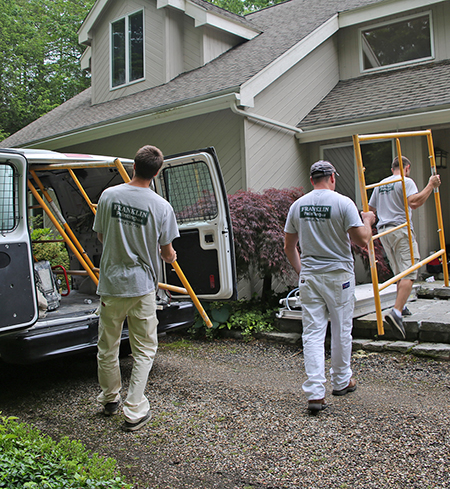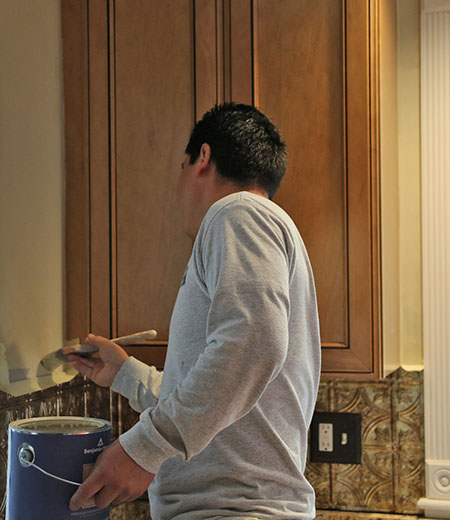
A lot of practice and training goes into making a professional painter, and one of the things they learn along the way is how to avoid “common” mistakes that ruin their work. We can’t train you to be a pro painter in one article, but we can tell you how to keep from making amateur mistakes and thereby greatly improve your finished results.
1. Don’t fear the prep
Any experienced painter will tell you that a paint project might involve as much as 80 percent preparation and as little as 20 percent actual painting. Prep work involves thoroughly cleaning, scraping and sanding the surfaces to be painted. It also involves covering and protecting anything in the vicinity you don’t want paint on. Don’t scrimp on prep work.
2. Buy good brushes and rollers
You’ll never see a pro using a $3 brush. You shouldn’t either. You get what you pay for in terms of quality and durability. Buy the best brushes and rollers you can afford, and you’ll get an immediate difference in your results.
3. There is such a thing as “painter’s tape”
Most prep work involves some masking, but it shouldn’t involve traditional masking tape, which can stick semi-permanently to surfaces and be a pain to get off. Painter’s tape is easy-on, easy-off.
4. You won’t save money by avoiding a primer coat
Yes, adding a coat of primer means one more complete painting cycle. But if discoloration and stains bleed through a single coat of latex, you’re going to have to put on another coat, anyway. And you many have to put on more than one. For anything but the cleanest, purest walls, start with primer for uniform coverage.
5. Got traffic? Go gloss.
High-traffic areas like doors, doorways, banisters, cabinets and anything else that gets foot or hand traffic should be painted with washable satin or semi-gloss paint. Regular flat paint simply won’t hold up and is much harder to clean.
6. How do you paint over high-gloss?
Glossy paint dries to a very hard finish, making it difficult to grab onto new paint. For paint to adhere and look its best, it needs something to stick to, so always use sandpaper on glossy surfaces as part of your prep.
7. How much paint would a paint brush hold if a paint brush could tell you when to stop adding paint to it?

Following these tips will definitely make you a better and more careful painter. For jobs that are involved beyond the time you have to invest, Franklin Painting of Farmington, Conn., is ready to help you turn your interior or exterior into a genuine masterpiece of color and style. Call us at (877) 646-7774 with questions or to schedule an appointment.

Frank Campanelli, the esteemed founder of Franklin Painting LLC, has been leading the company since 1986. He takes immense pride in the stellar reputation his dedicated team has built by consistently delivering top-notch service to each customer.

